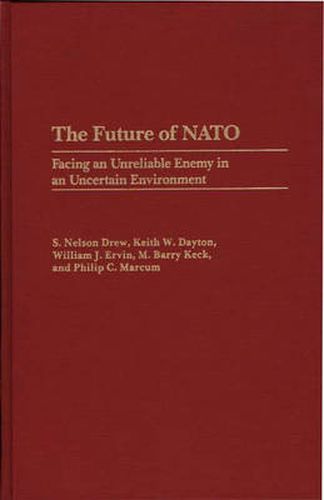Readings Newsletter
Become a Readings Member to make your shopping experience even easier.
Sign in or sign up for free!
You’re not far away from qualifying for FREE standard shipping within Australia
You’ve qualified for FREE standard shipping within Australia
The cart is loading…






How should NATO’s military strategy and force posture in Western Europe be handled given today’s changing relations between East and West? Five relatively senior US military officers spent a year exploring this issue as National Security Fellows at the Kennedy School of Harvard University. The Future of NATO serves as a reference based upon their analyses of the changes in the Soviet security posture and the political response of Western Europe to the collapse of the Warsaw pact. It is an analytical tool that deals with the requirements that any new NATO strategy will have to meet to be relevant. It is a catalyst for discussion based on the proposal to replace forward defence strategy with resilient defence . Resilient defence articulates one way in which the United States and NATO can accommodate the pressures for reduced defence spending in the face of a reduced military threat. Resilient defence is evolutionary rather than revolutionary in nature. It takes advantage of increased warning time to permit a strategy that draws heavily on existing mobilization capabilities. The strategy assumes cuts in active forces, yet it is designed to maintain a conventional defence capability across even deeper cuts by making more efficient use of lower levels of forces. This volume deals with more than just the political elements of the NATO alliance or details of military strategies. It also studies the interrelationship among political, economic, and military requirements underpinning Alliance security. Those concerned with military strategy and international security affairs will find this work relevant.
$9.00 standard shipping within Australia
FREE standard shipping within Australia for orders over $100.00
Express & International shipping calculated at checkout
How should NATO’s military strategy and force posture in Western Europe be handled given today’s changing relations between East and West? Five relatively senior US military officers spent a year exploring this issue as National Security Fellows at the Kennedy School of Harvard University. The Future of NATO serves as a reference based upon their analyses of the changes in the Soviet security posture and the political response of Western Europe to the collapse of the Warsaw pact. It is an analytical tool that deals with the requirements that any new NATO strategy will have to meet to be relevant. It is a catalyst for discussion based on the proposal to replace forward defence strategy with resilient defence . Resilient defence articulates one way in which the United States and NATO can accommodate the pressures for reduced defence spending in the face of a reduced military threat. Resilient defence is evolutionary rather than revolutionary in nature. It takes advantage of increased warning time to permit a strategy that draws heavily on existing mobilization capabilities. The strategy assumes cuts in active forces, yet it is designed to maintain a conventional defence capability across even deeper cuts by making more efficient use of lower levels of forces. This volume deals with more than just the political elements of the NATO alliance or details of military strategies. It also studies the interrelationship among political, economic, and military requirements underpinning Alliance security. Those concerned with military strategy and international security affairs will find this work relevant.